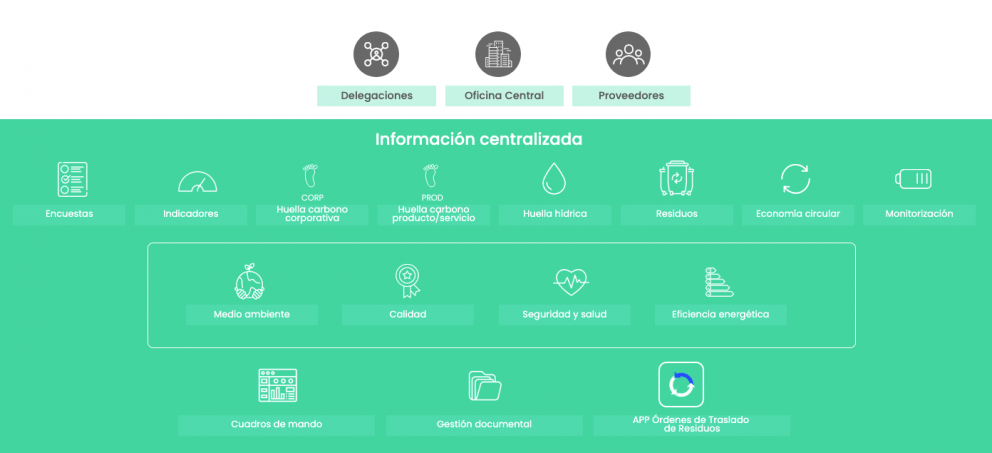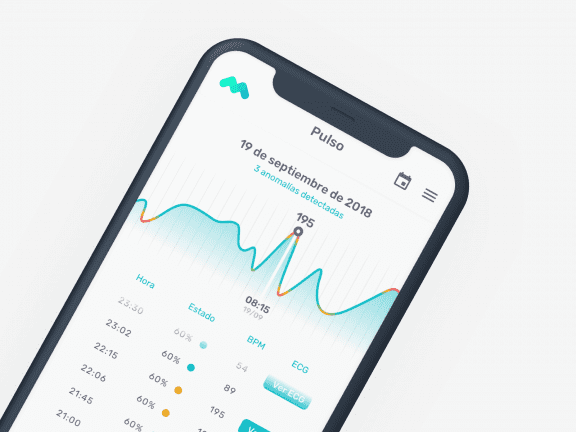Companies are increasingly moving towards FM outsourcing
Global market perspective (internal and external spending on FM)

Source: Frost & Sullivan: GlobalFM analysis 2018; McKinsey
Concern for sustainability, ease of access to housing, the transformation brought about by the pandemic in any type of space, the industrialisation and automation of processes, the breaking down of silos between building sectors and the digitisation of the sector itself are the six major challenges with the greatest potential impact for FM. These are identified in the report Challenges, Trends and Opportunities in the Facility Management sector, prepared by Innomads and presented in June 2021 at the TechEstate conference, the new platform of Barcelona Building Construmat. Focusing on sustainability and digitalisation opportunities, the report identifies the 8 main trends and strategic opportunities for the evolution of the coming years.
1 Emergence of sustainability concerns
2 The digital transformation of cities
Smart Cities also seek to monitor sustainability through technology. This would be an example of the projects being faced by public administrations. These initiatives require numerous and complex control and transparency mechanisms. In these cases digital solutions help, for example, to coordinate, organise and designate functions, plan and monitor objectives, establish control tools and detect risks in order to mitigate them. Technology not only supports the actual management of the buildings and facilities in these smart cities, but also helps to connect administrations and services to successfully execute each project.
«The rethinking of uses and reforms derived from the impact of the pandemic are a great opportunity to incorporate factors with an impact on sustainability»
3 Digitisation of the workplace accelerated by the pandemic
The new requirements imposed by COVID-19, such as the reduction of office space capacity or energy refurbishments, are a challenge but also an opportunity for FM, according to experts. Technology is contributing to safer and more efficient workspaces in the face of the new reality left by the pandemic. There are very intuitive and easy-to-use apps to adapt the management of workstations, establishing phases and shifts for returning to the office, guaranteeing the safe use of meeting rooms and other common areas and providing traceability of when someone tests positive to the virus.
These digital tools also make it possible to:
It’s a real puzzle for many organisations that requires "flexibility and inventiveness" as Deloitte points out in an article on the impact of COVID-19 on Facility Management as a result of the changing needs of companies and suppliers.
4 360º tools
The development of comprehensive solutions that have all the necessary information, focusing on the user, is another key element for the group of Facility Management experts. The maturity of the FM business allows the necessary specialisation to adapt solutions to the objectives of each organisation. Regardless of what their goals are, it is vital that companies rely on technology to achieve them. In particular, they should do so from a single, centralised and comprehensive platform that takes into account the different factors involved in the processes.
And all this, with powerful graphic management and accessible and intuitive applications, integrated with the collaborative work methodology of creation and management of construction projects Building Information Modelling (BIM) that involves the generation and administration of digital representations of the physical and functional characteristics of the spaces.

This comprehensive and unique platform is precisely what FAMA SOStenible offers. In addition to being a technological solution aimed at responding to the different sustainability needs of organisations, it allows them to find the best formula to computerise their processes and optimise their management in relation to their objectives.
«The Facility Manager is the key figure in optimising company resources. They plan preventive and corrective maintenance of buildings, implement intelligent technologies, manages spaces and new locations and save energy costs».
5 Inclusion of FM in the early stages of the construction project
Incorporating the figure of Facility Management in the design and planning of buildings would increase the possibilities of optimisation. This is precisely what Endesa has done in its process of automating and optimising the management of space, assets and general services, coinciding with its move to new headquarters. This commitment to having FM in the initial phases also makes it possible to get much more out of initiatives with a potential impact on sustainability, as these are actions that can only be developed in the design and construction of a facility.
BIM methodology
If we also add to this the incorporation of the aforementioned BIM methodology, the benefits for obtaining efficiency and sustainability certificates are increased. These certificates make it possible to evaluate and verify the environmental impact of a building from its construction to the end of its useful life. This methodology allows, thanks to the amount of information available for each product and the detailed modelling, to check the energy efficiency of the building and even the amount of natural light that enters each room. It does this by taking into account the climatic conditions of the area, the orientation of the building and any obstructions in the environment. In short, BIM makes it possible to quickly construct buildings that are more energy efficient, more economical, more sustainable and more durable. In this sense, for example, FAMA has experience participating and leading several projects based on this methodology, including 'The Ó Building', the first building defined with BIM 7D and integrated with the facilities management software CAFM/IWMS from the construction project.
6 Accelerating the digital transformation of the FM with a focus on the wellbeing of users
The real estate industries, from design and construction to Facility Management itself, are among those that have been slowest to adapt to digital transformation. This is despite the fact that there are currently digital tools and solutions on the market that allow companies operating in these sectors to improve their competitiveness. According to experts, the generational change will favour "the adoption of digital tools in the sector". A 2019 ARC study already pointed out that 40% of existing FM professionals will be retiring in the next eight years.
In this context, new players have emerged that operate in real estate business models with a strong digital component, such as co-livings, co-workings and build-to rent. These new players, according to experts, may end up dragging the rest of the sector towards maximum digitisation of business processes.
The integration of artificial intelligence will be key, according to the sector, in data-driven decision-making.
Users play a key role in the digitisation strategy. They are increasingly accustomed to using digital tools in all areas of their lives and this makes them more inclined to use technology in their professional environments as well. And they do so by demanding that they be as powerful and easy to use as the ones they use in their daily and personal lives. Thus, in recent years, there has been a shift from managing buildings in isolation to thinking about people's well-being.
The ultimate goal of FM is therefore to involve the users of the facilities in their own well-being. How? By means of simple APP mobility solutions that meet the needs of organisations. What do you get out of it?
In short, focusing on achieving a positive experience for the users of spaces and facilities generates an important competitive advantage for organisations.
7 Automation of indicator control
Digitalisation projects bring with them enormous opportunities to make the operating models of facility providers more efficient. In addition to the advantages of digital transformation in the management of building maintenance and services, there is also the control of the indicators stipulated in the agreements with suppliers. Controls that can also be automated. A clear example of this is the Facilities Management transformation process carried out at RTVE with 300,000 m2 in 592 buildings throughout Spain and some 45,000 inventory elements.
8 Cost reduction with SaaS technology and APIs
The explosion of digital solutions in Software as a Service format and the simplification of integrations offered by APIs allow lower costs and development time, despite the fact that the cost and timeframe of some digitisation projects are significant. The time and complexity of the implementation and adoption of this type of tools are increasingly shorter.


